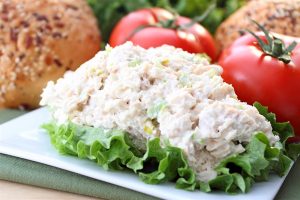West Australians are being warned to avoid eating raw or partly cooked eggs because of a surge in cases of salmonella food poisoning.
 Reports of salmonella gastroenteritis are at records levels and have been linked to particular molecular types associated with eggs.
Reports of salmonella gastroenteritis are at records levels and have been linked to particular molecular types associated with eggs.
The WA Health Department said yesterday there had been 713 reported infections from salmonella typhimurium by the end of April, which was more than four times the usual number.
The infection was commonly associated with consumption of foods containing raw or under-cooked eggs.
A spokeswoman told Cathy O’Leary of The West Australian that cases of the salmonella infection had been increasing in WA since 2015 but had accelerated since late last year.
“There are two molecular subtypes, PFGE1 and PFGE43, that are currently causing most of this increase,” she said.
“Epidemiological evidence from investigations of identified localised outbreaks and a large case-control study of community cases indicates that eating raw or runny eggs is a significant cause of illness. This includes breakfast dishes containing eggs, and desserts and aioli made with raw eggs.”
Environmental investigations indicated some outbreaks had been caused by poor handling of egg products at the food manufacturing and preparation level and by consumers.
 The department said that while eggs were a good source of vitamins and minerals, like many other foods they could be contaminated with bacteria, including salmonella. It was important to handle and prepare eggs safely to reduce the food poisoning risk.
The department said that while eggs were a good source of vitamins and minerals, like many other foods they could be contaminated with bacteria, including salmonella. It was important to handle and prepare eggs safely to reduce the food poisoning risk.
“The department recommends that people don’t use cracked or dirty eggs in raw egg dishes,” she said.
“If possible, it is best to avoid any uncooked foods or dishes that contain raw egg.
“This is because it is impossible to guarantee the safety of eating raw eggs and dishes that contain unpasteurised raw egg products.”
A selection of egg-related outbreaks in Australia can be found here.
 In all, 11 counties are affected. Most cases are in Halland together with Dalarna, Jönköping and Västra Götaland, which P4 Halland was the first to tell . The infected are in all age groups, but just over half are 60 years or older. There are slightly more women than men.
In all, 11 counties are affected. Most cases are in Halland together with Dalarna, Jönköping and Västra Götaland, which P4 Halland was the first to tell . The infected are in all age groups, but just over half are 60 years or older. There are slightly more women than men.





 may be part of this outbreak. Investigators are using data from PulseNet, the national subtyping network made up of state and local public health laboratories and federal food regulatory laboratories that performs molecular surveillance of foodborne infections.
may be part of this outbreak. Investigators are using data from PulseNet, the national subtyping network made up of state and local public health laboratories and federal food regulatory laboratories that performs molecular surveillance of foodborne infections. stores in Maine, New York, New Hampshire and Vermont between Oct. 12 and Nov. 20. No other product description is available at this time.
stores in Maine, New York, New Hampshire and Vermont between Oct. 12 and Nov. 20. No other product description is available at this time. .jpeg) Illinois. At least two additional cases of S. Typhimurium are pending the PFGE results. Cases in other states have also been identified.
Illinois. At least two additional cases of S. Typhimurium are pending the PFGE results. Cases in other states have also been identified. Today, the
Today, the .jpg) State officials initially discovered the contaminated product through product testing conducted after MDH epidemiological evidence and an investigation by MDA’s Rapid Response Team implicated King Nut creamy peanut butter as a likely source of Salmonella infections in Minnesota residents.
State officials initially discovered the contaminated product through product testing conducted after MDH epidemiological evidence and an investigation by MDA’s Rapid Response Team implicated King Nut creamy peanut butter as a likely source of Salmonella infections in Minnesota residents. Apparently, that is driving Connecticut congresswoman Rosa DeLauro nuts, cause
Apparently, that is driving Connecticut congresswoman Rosa DeLauro nuts, cause